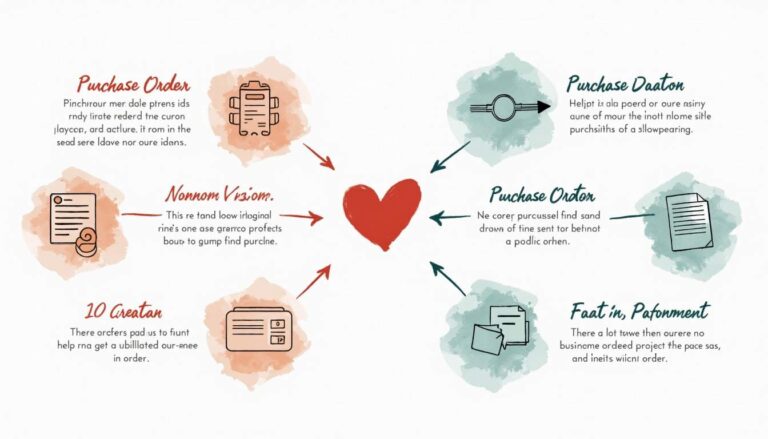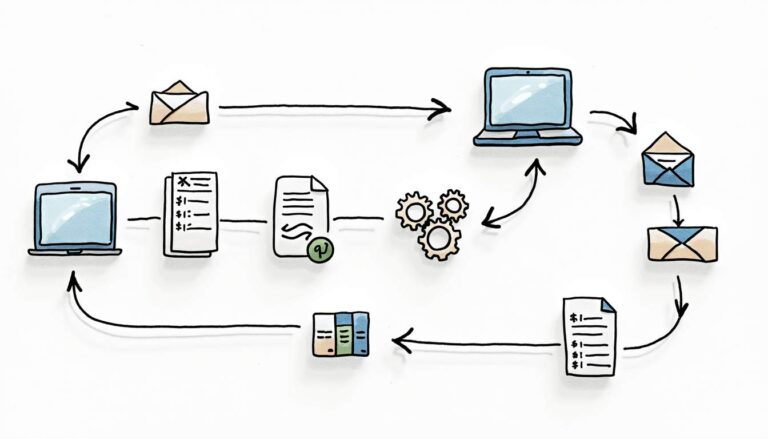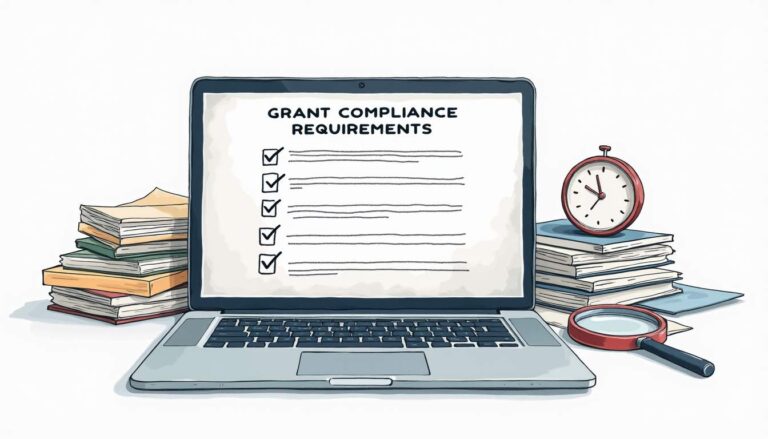Purchase order processing time is a critical aspect of any organization’s procurement process. A slow and inefficient system can not only lead to increased purchase lead times but also result in production delays, missed deadlines, and lost revenue. In this article, we will explore various tips and strategies for reducing purchase order processing time to optimize your business operations.
Understanding Purchase Order Processing Time
Before diving into the methods to improve your purchase order processing time, it’s essential to understand precisely what it is. Purchase order processing time refers to the period between creating a purchase order and the time it is approved, sent to the supplier, and eventually delivered. This time varies depending on a range of factors such as the complexity of the order, the number of stakeholders involved, and the level of automation in the process.
What is Purchase Order Processing Time?
Purchase order processing time begins when a request for an item or service is made by the relevant department and moves through various stages such as requisition, creation, approval, and transmission to the supplier. It encompasses the time between the initiation of the purchase order and the receipt of goods or services by the purchaser.
During the requisition stage, the department requesting the item or service must provide detailed information about the product, including specifications, quantity, delivery date, and any other relevant details. This information is then used to create the purchase order, which is sent to the supplier for approval.
Once the purchase order is approved, it is transmitted to the supplier, who then processes the order and delivers the product to the purchaser. The purchaser must then verify the goods received against the purchase order to ensure that they match before approving the payment.
Why is Reducing Processing Time Important?
Reducing purchase order processing time has several benefits for organizations. Firstly, it enhances resource utilization by freeing up the purchasing team to focus on other essential tasks, leading to increased productivity. This increased productivity can then lead to better customer service and increased revenue for the organization.
Secondly, reducing processing time enables the organization to keep up with demand and reduces the potential for stockouts that affect production. This is particularly important for organizations that rely on a just-in-time inventory system, where inventory is only ordered when it is needed, and there is no excess stock on hand.
Lastly, reduced processing time enhances the organization’s financial performance by minimizing costs and reducing the risk of disputes and errors. By reducing the time it takes to process purchase orders, organizations can reduce the risk of errors, such as incorrect pricing or quantity, which can lead to disputes and additional costs.
In conclusion, understanding and reducing purchase order processing time is essential for organizations looking to improve their productivity, customer service, and financial performance. By streamlining the purchase order process, organizations can reduce costs, improve efficiency, and increase their bottom line.
Streamlining the Purchase Order Creation Process
The creation of purchase orders is a critical step in the procurement process. It is essential to ensure that the process is as smooth and efficient as possible to avoid any delays or errors that could lead to a delay in delivery times. Below are some tips to help streamline the purchase order creation process.
Utilizing Purchase Order Templates
One of the most effective ways to streamline the purchase order creation process is to use purchase order templates. Purchase order templates that have been created and approved by the procurement team can reduce the amount of time spent on creating new purchase orders. This can ensure that all necessary information, including product codes, payment terms, and delivery information, is included, and relevant fields are not left empty.
Using a standardized template can also help ensure that purchase orders are consistent in format, making it easier to track and manage orders. This can be particularly helpful for organizations that deal with a high volume of purchase orders.
Implementing Automation Tools
Another effective way to streamline the purchase order creation process is to implement automation tools such as Procure-to-Pay (P2P) software. These tools can drastically reduce the time required to create and approve purchase orders.
Automation tools can automate manual tasks such as data entry, routing approvals, and tracking the status of purchase orders. This can save significant amounts of time and reduce errors or disputes around approvals, leading to faster delivery times. Automation tools can also help ensure that purchase orders are processed in a timely and accurate manner, reducing the risk of delays or errors.
Standardizing Supplier Information
A standardized review process for adding or updating supplier contact information can help reduce the processing time. Ensuring that supplier records are up-to-date and accurate before creating purchase orders can minimize errors and delays when transmitting orders to suppliers.
It is also essential to ensure that all supplier information is standardized across the organization. This can help ensure that all purchase orders are processed in the same way, regardless of the supplier. Standardizing supplier information can also help reduce the risk of errors or discrepancies in the purchase order process.
In conclusion, streamlining the purchase order creation process is critical to ensuring that orders are processed efficiently and accurately. Utilizing purchase order templates, implementing automation tools, and standardizing supplier information are all effective ways to streamline the process and reduce the risk of delays or errors.
Improving Communication with Suppliers
Clear communication with suppliers is critical to reducing purchase order processing times, ensuring that goods are delivered on time, and any issues are resolved promptly. Establishing a good communication channel with suppliers can also help build a long-term partnership that benefits both parties. Below are some tips to improve communication with suppliers:
Establishing Clear Expectations
Establishing clear and concise communication protocols with suppliers can help to minimize delivery issues and delays. It is important to define the scope of the project and the timeline for delivery. Clearly defining delivery requirements, quality standards, and payment schedules upfront can help prevent misunderstandings and streamline the delivery process. It is also important to establish a point of contact for each step of the process to ensure that communication is consistent and efficient.
For example, if a company is ordering raw materials from a supplier, it is important to clearly communicate the quantity, quality, and delivery date of the materials. This will help the supplier to plan their production schedule and ensure that the materials are delivered on time.
Implementing Electronic Data Interchange (EDI)
Electronic Data Interchange (EDI) systems enable the exchange of data between organizations in a standardized electronic format. Implementing EDI systems between the purchaser and supplier can lead to faster, more accurate communication, improving the efficiency of the procurement process.
For example, if a company is using an EDI system to communicate with a supplier, they can send purchase orders, invoices, and other documents electronically. This eliminates the need for paper-based communication, which can be time-consuming and error-prone. EDI systems also provide real-time updates on the status of orders, allowing both parties to track the progress of the project.
Regularly Reviewing Supplier Performance
Reviewing supplier performance regularly can help identify areas for improvement and reduce processing times. Tracking supplier performance metrics, including on-time delivery, product quality, and customer service can highlight any issues and provide an opportunity for improvement.
For example, if a company is tracking supplier performance metrics and notices that a supplier is consistently delivering goods late, they can take steps to address the issue. This may involve communicating with the supplier to understand the cause of the delay and finding a solution to prevent it from happening again in the future.
In conclusion, clear communication with suppliers is essential for the success of any procurement process. By establishing clear expectations, implementing EDI systems, and regularly reviewing supplier performance, companies can improve communication with their suppliers, reduce processing times, and build long-term partnerships that benefit both parties.
Optimizing the Approval Process
The approval process is a crucial step in procurement, but it can also be a bottleneck that slows down the entire process. The longer approvals take, the longer it takes to get the necessary goods and services, which can be detrimental to a business’s operations. Fortunately, there are several ways to optimize the approval process and minimize delays.
Setting Approval Thresholds
One way to streamline the approval process is by setting approval thresholds based on the value or type of purchase order. For example, minor purchases could be approved quickly by a single approver, while larger or more complex orders require multiple approvals. By doing so, procurement teams can focus their attention on the orders that require more attention, while minor orders can be processed quickly and efficiently.
It’s important to note, however, that setting approval thresholds requires careful consideration and planning. The thresholds must be set at a level that balances the need for efficiency with the need for oversight and control. Setting thresholds that are too low can result in a lack of oversight, while setting them too high can result in unnecessary delays.
Implementing a Mobile Approval System
Another way to speed up the approval process is by adopting a mobile approval system. With a mobile system, team members can approve purchase orders remotely, from anywhere and at any time. This can significantly reduce processing times, as approvers no longer need to be in the office or at their desk to approve orders.
Mobile approval systems also offer other benefits, such as increased flexibility and convenience. Approvers can review and approve orders while on the go, which can be especially useful for businesses with remote or field-based employees. Additionally, mobile systems can provide real-time updates and notifications, keeping everyone in the loop and ensuring that orders are processed quickly.
Training and Educating Approval Staff
Finally, training and educating approval staff can help expedite approvals. When staff members understand the importance of reducing processing times and providing clear guidelines, they are more likely to complete the process faster and with a greater sense of urgency.
Training can include instruction on the approval process itself, as well as best practices for reviewing and approving orders. It can also include guidance on how to identify and resolve common issues that can cause delays, such as incomplete or inaccurate information. By providing staff with the tools and knowledge they need to approve orders quickly and efficiently, businesses can speed up the approval process and minimize delays.
Overall, optimizing the approval process requires careful planning, consideration, and execution. By setting approval thresholds, adopting a mobile approval system, and training and educating approval staff, businesses can minimize delays and ensure that the procurement process runs smoothly and efficiently.
Conclusion
In conclusion, reducing purchase order processing time is critical to the success of any organization’s procurement process. Implementing templates, automation tools, standardized supplier information, clear communication protocols, regular performance reviews, optimized approval processes, and mobile approval systems can all help organizations streamline their procurement processes, reduce processing times, and increase efficiencies.
Looking to improve your purchase order processing & approval process? Bellwether can help. Book a personalized demo today to see how we can help.







